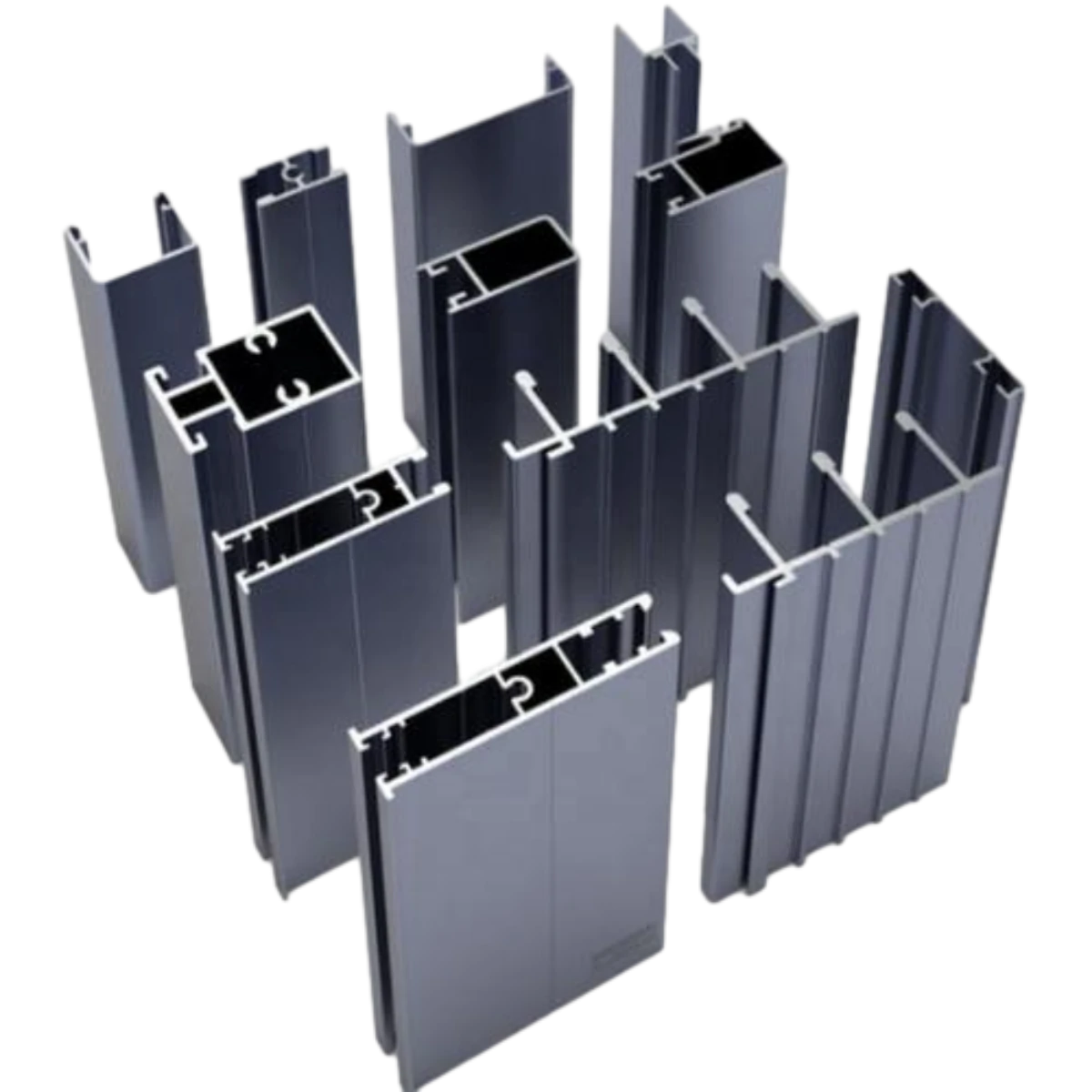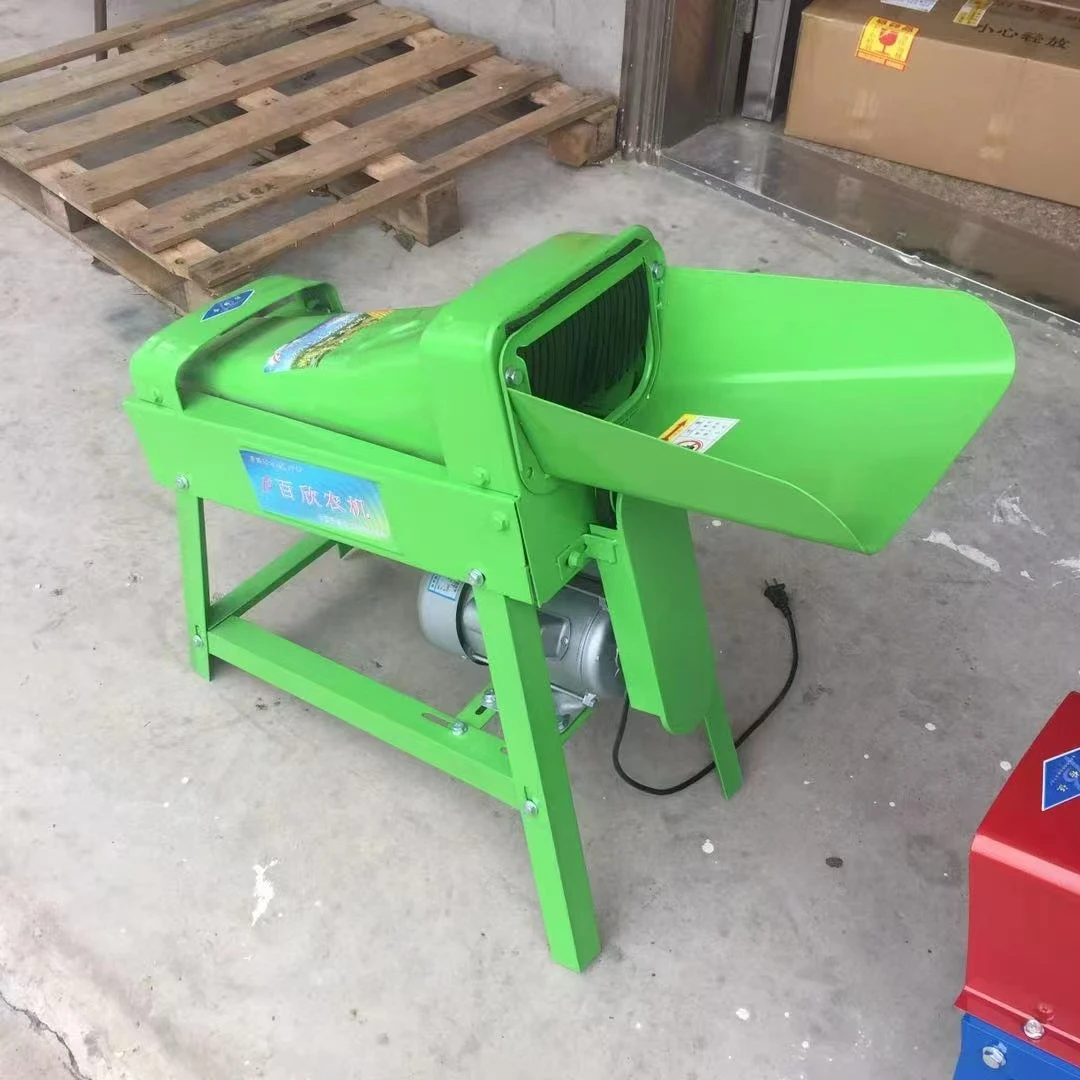Durable P Trap ASTM A888 NO HUB Cast Iron Soil Fittings
Industry Trends and Market Dynamics
The global infrastructure landscape is undergoing significant evolution, driven by urbanization, industrial expansion, and an increasing focus on sustainable and resilient building materials. Within this context, the demand for robust and reliable wastewater management solutions is paramount. Cast iron soil pipe and fittings have long been the backbone of drainage, waste, and vent (DWV) systems due to their exceptional durability, sound attenuation properties, and fire resistance. A critical component in these systems, especially in commercial and industrial applications, is the P Trap ASTM A888 NO HUB cast iron soil fittings.
Current industry trends indicate a strong preference for materials that offer longevity and minimal maintenance. Cast iron, particularly with the NO HUB connection system, addresses these needs directly by providing a joint that is both secure and flexible, accommodating minor structural shifts without compromising integrity. Furthermore, the push for quieter building environments in hospitals, hotels, and multi-family residences has amplified the appeal of cast iron, which inherently offers superior noise reduction compared to plastic alternatives. Regulatory bodies and engineering specifications continue to endorse ASTM A888, solidifying its position as a standard for high-quality soil pipe and fittings. This commitment to stringent standards ensures product reliability and long-term performance in diverse and demanding applications.
Technological advancements in casting processes are also enhancing the efficiency and quality of production, leading to more uniform products with improved surface finishes and precise dimensional tolerances. This continuous improvement ensures that cast iron fittings, including the sophisticated P trap designs, remain competitive and indispensable in modern plumbing systems. The integration of Building Information Modeling (BIM) tools further streamlines the design and installation of cast iron DWV systems, allowing for precise planning and clash detection, ultimately reducing project costs and timelines.
Manufacturing Process Flow
The production of P Trap ASTM A888 NO HUB cast iron soil fittings involves a meticulously controlled multi-stage process designed to ensure adherence to the rigorous ASTM A888 standard. This standard specifies the material, dimensions, and testing requirements for cast iron soil pipe and fittings. The primary material utilized is gray cast iron, selected for its excellent casting properties, inherent corrosion resistance, and high compressive strength.
- Raw Material Preparation: High-grade pig iron, steel scrap, and various alloying elements (e.g., silicon, manganese, sulfur, phosphorus) are carefully selected and proportioned. These materials are analyzed for chemical composition using spectrometric analysis to ensure the final product meets specified metallurgical requirements for ASTM A48 Class 30 gray cast iron.
- Melting and Alloying: The prepared raw materials are melted in an induction furnace or cupola furnace at precisely controlled temperatures, typically exceeding 1400°C (2550°F). During this stage, precise alloying adjustments are made to achieve the desired gray cast iron composition, characterized by graphite flakes within a ferrite or pearlite matrix, which imparts its unique properties of damping, machinability, and thermal conductivity.
- Molding: Modern foundries primarily employ automated molding lines, such as horizontal or vertical flaskless molding machines, or shell molding processes, to create precise molds for the P trap fittings. Sand molds are engineered with high dimensional accuracy to capture the intricate geometry of the P trap, including the internal trapway and the smooth NO HUB connections. The mold design ensures a smooth internal surface for efficient waste flow and minimal friction.
- Casting: Molten iron is poured into the prepared molds under controlled conditions. The pouring temperature and rate are critical to prevent defects like cold shuts, porosity, or misruns. Advanced real-time monitoring systems are employed to ensure consistent casting quality.
- Shakeout and Cleaning: After solidification and cooling, the casting is removed from the sand mold (shakeout). Gates, risers, and flashings are then meticulously removed by grinding, abrasive blasting, or automated robotic deflashing. The fittings undergo further cleaning to achieve a smooth exterior finish, often involving shot blasting to remove residual scale and prepare the surface for coating.
- Machining (if required): While NO HUB fittings generally feature near-net-shape casting for their connection ends, some critical surfaces may undergo precision CNC machining to ensure precise dimensional accuracy and smooth sealing surfaces for coupling connections. This guarantees a perfect, leak-tight fit with stainless steel NO HUB couplings, complying with CISPI 310.
- Coating: To significantly enhance corrosion resistance and provide a robust protective layer, the fittings are typically coated. A common and effective coating is a bituminous asphaltic material, applied either by dipping in a hot bath or by spraying. This coating adheres strongly to the cast iron surface, offering an additional barrier against aggressive wastewater components, protecting against internal and external corrosion, and extending the service life. Some manufacturers may offer epoxy coatings for specific high-performance applications.
-
Quality Control and Testing: Each fitting undergoes rigorous testing to comply with ASTM A888 and other relevant international standards like ISO 6594 or ANSI/CISPI 301. Our facilities maintain ISO 9001 certification to ensure consistent quality management throughout the process.
- Dimensional Inspection: Critical dimensions, wall thickness, and geometry are checked using calipers, gauges, and advanced 3D scanning to ensure they meet the precise tolerances specified by ASTM A888 and CISPI 301.
- Hydrostatic Pressure Testing: Samples or batches are subjected to internal water pressure tests (e.g., minimum 50 psi for 15 minutes) to verify joint integrity and detect any leaks, ensuring the fittings can withstand operational pressures safely.
- Material Composition Analysis: Spectrometric analysis is performed on raw materials and finished products to confirm the correct chemical composition of the gray cast iron, guaranteeing mechanical properties.
- Tensile Strength and Hardness Tests: Mechanical properties are verified through regular testing to ensure the fittings possess the required strength, ductility, and hardness for long service life and resistance to stress.
- Coating Adhesion Test: The integrity and adhesion of the protective coating are assessed to ensure long-term corrosion resistance and prevent delamination.
- Packaging and Shipping: Finished and approved fittings are carefully packaged to prevent damage during transit, typically using robust pallets and protective wrapping, and are ready for distribution to various target industries.
The typical service life of these cast iron fittings often exceeds 50 years, and in many cases, can extend to a century or more under normal operating conditions. This longevity contributes significantly to lower lifecycle costs for infrastructure projects. Target industries include petrochemical, metallurgy, municipal water supply and drainage, commercial and residential construction, industrial facilities, and pharmaceutical plants. In these environments, the inherent corrosion resistance and robust mechanical properties of cast iron provide critical advantages, such as enhanced system reliability, superior energy saving (due to reduced maintenance needs over decades), and significantly reduced maintenance frequency.
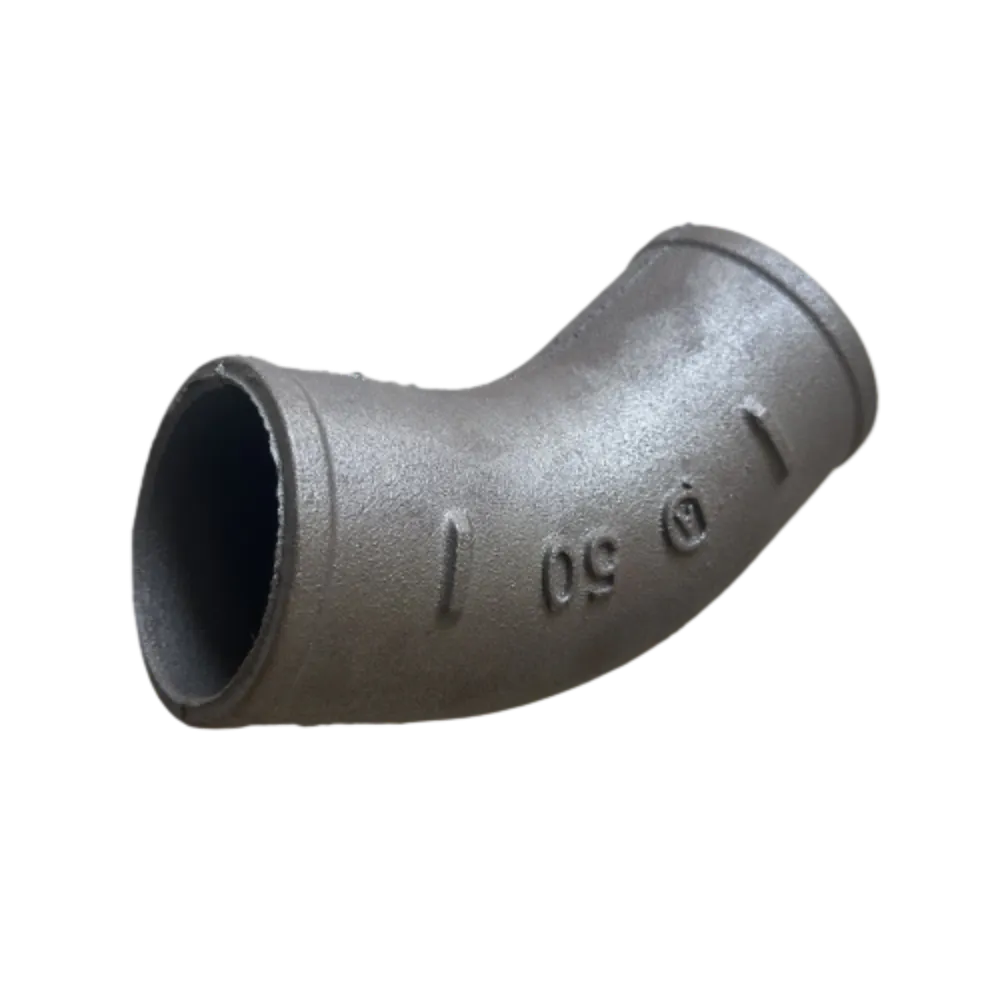
Technical Specifications and Parameters
Understanding the precise technical specifications of P Trap ASTM A888 NO HUB cast iron soil fittings is crucial for engineers and procurement professionals to ensure system compatibility and performance. These fittings are manufactured to meet or exceed the requirements of ASTM A888 and CISPI 301, which are the authoritative standards for hubless cast iron soil pipe and fittings in North America.
The "NO HUB" designation refers to the hubless connection system, which utilizes a stainless steel coupling and an elastomeric gasket to create a leak-proof joint without the need for traditional lead and oakum packing. This system significantly simplifies installation, reduces labor costs, and provides a more flexible and durable connection, particularly advantageous in seismic zones where slight movement accommodation is beneficial.
Key Product Specifications for P Trap ASTM A888 NO HUB Cast Iron Soil Fittings
| Parameter | Specification / Value | Standard |
|---|---|---|
| Material | Gray Cast Iron | ASTM A48 Class 30 (Minimum 30,000 psi tensile strength) |
| Standard Compliance | ASTM A888 (latest revision) for Hubless Cast Iron Soil Pipe & Fittings | ASTM, CISPI 301, CSA B70 |
| Connection Type | NO HUB (Requires stainless steel coupling per CISPI 310 or ASTM C564 gasket) | CISPI 310, ASTM C564 |
| Internal & External Coating | Bituminous Asphaltic Material (conforming to AWWA C104/A21.4) or Epoxy | Manufacturer Specific, for corrosion protection |
| Nominal Sizes (NPS) | 1.5" to 15" (DN40 to DN400) | ASTM A888, ASME B16.5 |
| Operating Temperature Range | Continuous up to 212°F (100°C), intermittent higher | General industry practice, building codes |
| Hydrostatic Test Pressure | Minimum 50 psi (3.4 bar) for 15 minutes, factory tested | ASTM A888 |
| Fire Resistance Rating | Non-combustible material (meets NFPA, IBC, ULC requirements) | NFPA 251, ASTM E119 |
| Sound Attenuation | Superior to plastic pipe (demonstrated STC/IIC ratings) | ASTM E90, ASTM E492 (test method) |
| Thermal Expansion Coefficient | Low, approx. 6.7 x 10^-6 in./in./°F | Material property |
Comparative Analysis: Cast Iron vs. PVC P Traps
While PVC (Polyvinyl Chloride) offers a lightweight and often lower initial cost solution, the performance characteristics of cast iron, particularly P Trap ASTM A888 NO HUB cast iron soil fittings, present distinct advantages in specific demanding environments. The choice between materials is a life-cycle cost consideration, balancing initial outlay with long-term reliability, safety, and performance.
| Feature | Cast Iron (ASTM A888 NO HUB) | PVC (e.g., ASTM D2665, D1785) |
|---|---|---|
| Material Longevity | 50-100+ years, excellent long-term chemical resistance | Approx. 25-50 years, susceptible to chemical degradation and embrittlement over time |
| Fire Resistance | Non-combustible, provides effective fire barrier, does not melt or drip. Contributes to passive fire protection. | Combustible, produces toxic fumes and smoke when burned, can melt and spread fire. Requires extensive fire stopping. |
| Sound Attenuation | Excellent, significantly reduces waste flow noise. Typical STC ratings >50. | Poor, amplifies waste flow noise. Typical STC ratings |
| Strength & Rigidity | High compressive and impact strength, rigid. Resists crushing and puncture. | Lower impact strength, more flexible, prone to sagging under sustained loads or heat. |
| Thermal Expansion | Minimal, stable over temperature changes (low coefficient of thermal expansion). | Significant, requires expansion joints and careful support to prevent stress-induced failure. |
| Installation Complexity | Easier than hub & spigot, but heavier than PVC. NO HUB couplings streamline process. | Lightweight, solvent welding required. Can be quickly installed. |
| Environmental Impact | 100% recyclable, high scrap value, made from abundant raw materials. | Recyclable, but less commonly recycled in practice. Production involves petrochemicals. |
Application Scenarios and Technical Advantages
The inherent properties of P Trap ASTM A888 NO HUB cast iron soil fittings make them indispensable across a wide array of demanding application scenarios where reliability, durability, and specific performance criteria are paramount. These fittings are engineered for environments where failure is not an option.
- High-Rise Commercial and Residential Buildings: In skyscrapers and multi-story complexes, cast iron's superior sound attenuation drastically reduces noise transfer from DWV systems between floors and units. This is critical for occupant comfort, luxury acoustic specifications, and compliance with stringent acoustic building codes (e.g., International Building Code). Its non-combustible nature also prevents the spread of fire through pipe chases, offering enhanced life safety and simplifying fire stopping procedures.
- Hospitals and Healthcare Facilities: These environments demand quiet operation for patient recovery, privacy, and staff concentration in critical areas. Cast iron's sound-dampening qualities are highly valued. Furthermore, its inherent rigidity, long-term stability, and non-corrosive properties ensure consistent performance in systems critical for hygiene, sanitation, and waste removal from laboratories. The robust construction minimizes the risk of costly and disruptive leaks, vital for maintaining sterile environments and operational continuity.
- Industrial Facilities and Chemical Plants: In industrial settings where aggressive chemicals, high temperatures, or fluctuating waste streams might be present, the inherent chemical resistance of gray cast iron, often augmented by protective bituminous or epoxy coatings, offers a significant advantage over plastic alternatives. Its high mechanical strength withstands physical stresses, vibrations, and accidental impacts common in heavy industrial operations, ensuring system integrity and reducing downtime.
- Data Centers and Mission-Critical Infrastructure: Preventing water damage from pipe failures is paramount in facilities housing sensitive electronic equipment. Cast iron's exceptional longevity and robust construction provide peace of mind, drastically reducing the risk of catastrophic system failures that could disrupt critical operations and lead to immense financial losses. The non-combustibility also adds a layer of safety against fire in enclosed spaces.
- Educational Institutions and Public Buildings: Areas with high foot traffic, potential for physical impact, and long service expectations benefit from the strength and durability of cast iron. Its low thermal expansion coefficient also means less stress on pipe supports and structural elements over time, ensuring long-term system stability and safety in public access areas.
- Underground Drainage Systems: While plastic pipes are often used for underground applications, cast iron offers superior crush resistance and maintains structural integrity under heavy loads, making it highly suitable for deeper burial, areas with high ground pressure, or locations subject to heavy vehicle traffic. This often leads to lower long-term maintenance costs and greater system reliability in sub-grade installations.
Key Technical Advantages:
- Superior Sound Attenuation: Cast iron inherently dampens noise and vibration from wastewater flow better than any other DWV material, making it ideal for applications requiring quiet operation. This significantly improves indoor environmental quality and occupant comfort.
- Exceptional Fire Resistance: As a non-combustible material, cast iron does not contribute to flame spread or smoke generation during a fire event. It maintains structural integrity under high temperatures, providing an essential passive fire protection barrier within building structures and ensuring compliance with stringent fire codes.
- Durability and Longevity: With an expected service life of 50 to 100+ years, cast iron fittings offer unmatched longevity. This reduces the need for premature replacements, minimizes disruptions, and significantly lowers lifecycle costs and total cost of ownership for building owners.
- Corrosion Resistance: The gray cast iron composition, combined with protective bituminous or epoxy coatings, provides excellent resistance to the corrosive elements typically found in domestic and many industrial wastewater streams, ensuring long-term material integrity.
- High Strength and Rigidity: Resistant to crushing, impact, and external loads, cast iron maintains its structural integrity under challenging conditions, including underground installations, areas subject to high mechanical stress, and general heavy-duty use.
- Low Thermal Expansion: Cast iron exhibits minimal expansion and contraction with temperature fluctuations. This prevents undue stress on pipe joints and supports, a common issue with plastic piping systems, ensuring long-term system stability and reducing maintenance associated with thermal movement.
- Environmental Sustainability: Cast iron is a highly recyclable material, often manufactured with a significant percentage of recycled content. At the end of its exceptionally long service life, it can be fully recycled without degradation, contributing positively to green building initiatives and reducing environmental impact.
Vendor Comparison and Customized Solutions
When selecting a supplier for P Trap ASTM A888 NO HUB cast iron soil fittings, B2B decision-makers must evaluate several critical factors beyond just unit cost. A reliable vendor offers not only high-quality products but also comprehensive support, customization capabilities, and proven reliability in the supply chain. Strategic partnership with a knowledgeable manufacturer can significantly de-risk large-scale projects and optimize long-term operational costs.
Key Criteria for Vendor Evaluation:
- Certifications and Compliance: Verify adherence to industry-leading standards such as ASTM A888, CISPI 301, and other relevant international standards (e.g., ISO 9001 for quality management, UL listings, CSA certification). This ensures product safety, quality, and regulatory acceptance.
- Manufacturing Capabilities and Quality Control: Assess the vendor's casting technology, modern quality control processes (e.g., NDT, statistical process control), and overall production capacity to consistently meet stringent specifications, project timelines, and high-volume demands. A tour of facilities or detailed documentation of QC protocols can be invaluable.
- Product Range and Availability: Ensure the vendor offers a full suite of fittings in various sizes and configurations, readily available to prevent project delays. A broad inventory supports diverse project requirements and reduces procurement complexity.
- Technical Support and Engineering Expertise: A strong vendor provides expert guidance on product selection, system design optimization, installation best practices, and efficient troubleshooting. This engineering support is critical for complex projects and ensuring optimal system performance.
- Logistics and Supply Chain Reliability: Evaluate the vendor's ability to deliver products efficiently, consistently, and on schedule, especially for large-scale or international projects. Factors like warehousing, shipping partnerships, and inventory management are crucial.
- Customization Options: The capacity and willingness to produce specialized fittings for unique project requirements, offering tailored solutions rather than one-size-fits-all.
- Track Record and Reputation: Review customer feedback, case studies, and references to gauge the vendor's history of successful project deliveries and client satisfaction.
Customized Solutions:
While standard P traps cover most applications, certain complex projects, heritage building renovations, or highly specialized industrial setups may require bespoke solutions. Reputable manufacturers possess the engineering acumen, advanced foundry technology, and manufacturing flexibility to offer customized P Trap ASTM A888 NO HUB cast iron soil fittings. This might include:
- Non-Standard Angles or Offsets: For tight spaces, unique architectural constraints, or specific hydraulic performance requirements, custom angles or offsets can simplify installation, minimize flow resistance, and improve system efficiency.
- Specific Lengths or Dimensions: Producing fittings with custom leg lengths or specific overall dimensions can reduce the need for cutting and joining on-site, thereby streamlining installation, minimizing waste, and ensuring precise fitment.
- Specialty Coatings: For highly corrosive environments, waste streams with unique chemical compositions, or specific aesthetic requirements, specialized internal or external coatings (e.g., advanced epoxy formulations, glass linings) can be applied to significantly extend service life and enhance chemical resistance beyond standard bituminous coatings.
- Integrated Features: Combining multiple fitting functions into a single custom-cast piece (e.g., a P trap with an integrated cleanout or specific branch connections) can reduce joint count, minimize potential leak points, and simplify complex assemblies.
- Enhanced Material Properties: For extreme pressure, exceptionally high or low temperature applications, or unique mechanical loading, adjustments to the cast iron alloy composition (e.g., ductile iron for higher tensile strength, specialized high-silicon iron for extreme acid resistance) can be explored, though typically standard ASTM A888 covers a broad operational range.
Engaging with a manufacturer that offers design and prototyping services for these custom solutions ensures that unique project challenges are met with precision-engineered components, guaranteeing optimal system performance, structural integrity, and long-term longevity. This collaborative approach often leads to more efficient and cost-effective solutions in the long run.
Application Case Studies
The proven track record of P Trap ASTM A888 NO HUB cast iron soil fittings is best illustrated through real-world applications where their advantages have delivered tangible benefits in terms of reliability, safety, and operational efficiency across diverse sectors.
Case Study 1: Luxury High-Rise Condominium Project, New York City
- Challenge: Developers aimed for ultra-luxury living spaces, demanding absolute minimal noise transmission between units and strict adherence to fire safety codes for a 60-story building. The project involved complex vertical and horizontal DWV runs with high flow rates.
- Solution: Specification of ASTM A888 NO HUB cast iron soil pipe and fittings throughout the entire DWV system. The superior sound-dampening qualities of cast iron were critical in achieving the desired acoustic performance, reducing waste flow noise by up to 10-15 dB compared to plastic, and exceeding local building code requirements for sound transmission. Its non-combustible nature provided a crucial passive fire protection element, simplifying fire stopping procedures in pipe chases and contributing to the building's overall fire rating.
- Outcome: Exceptional acoustic ratings and proven fire safety, resulting in high occupant satisfaction regarding privacy and quietness, and full compliance with stringent city regulations. The NO HUB system facilitated quicker and more reliable installation compared to traditional methods, helping to keep the ambitious construction schedule on track, and minimizing labor costs on-site.
Case Study 2: Major University Research Hospital Expansion, Texas
- Challenge: The expansion included new patient wings, extensive laboratories, and surgical suites. The piping system needed to handle diverse waste streams (including mild chemicals), operate quietly, offer extreme reliability to avoid disruptions to critical medical services, and maintain integrity over a projected 75-year lifespan.
- Solution: Cast iron DWV systems were selected due to their proven longevity, broad chemical resistance, and superior noise reduction capabilities. Specialized P traps were integrated into laboratory waste lines, ensuring robust performance against a range of effluents. The NO HUB connections were favored for their robust, yet slightly flexible nature, ideal for a large, complex structure that might experience minor settling over its extensive lifespan, ensuring long-term watertight connections.
- Outcome: A highly durable and reliable DWV system that minimized noise for patient recovery and staff concentration. The inherent fire resistance contributed significantly to the overall safety profile of the hospital, crucial for patient and staff protection. Minimal maintenance has been required since commissioning five years ago, reflecting the long-term cost-effectiveness and reliability of cast iron in a mission-critical environment.
Case Study 3: Industrial Food Processing Plant Renovation, Midwest
- Challenge: An aging DWV system required replacement in a facility with continuous, 24/7 operation. The new system needed to withstand frequent thermal cycling (from hot washdowns), occasional shock loads from heavy equipment, and a high volume of food waste effluent with varying pH levels. Minimizing plant downtime during installation was a critical project constraint.
- Solution: The existing system was completely replaced with ASTM A888 NO HUB cast iron soil pipe and fittings. The robust nature of cast iron was ideal for the demanding industrial environment, providing excellent resistance to physical damage and corrosion from organic waste. Its low thermal expansion characteristic ensured joint integrity and prevented stress failures despite temperature fluctuations from hot washdowns (up to 180°F). The NO HUB system allowed for faster, cleaner installation compared to traditional hub & spigot methods, significantly reducing plant downtime to a scheduled weekend shutdown.
- Outcome: A vastly improved DWV system with enhanced reliability, superior resistance to blockages due to smooth interior surfaces, and significantly reduced risk of leaks. The durability and chemical resistance of the cast iron components ensured a long operational life, minimizing future maintenance interventions and associated production losses in a production-critical environment. Post-installation inspections confirmed robust connections and optimal flow.
Trustworthiness and Support Information
At the core of any successful B2B partnership is trust, built upon transparent commitments regarding product quality, lead times, warranties, and responsive customer support. Our commitment to delivering high-quality P Trap ASTM A888 NO HUB cast iron soil fittings is backed by comprehensive support infrastructure and a dedication to client success. We prioritize clear communication and reliable execution at every stage.
Frequently Asked Questions (FAQ)
- Q: What makes ASTM A888 NO HUB cast iron fittings superior to other materials?
- A: ASTM A888 NO HUB cast iron fittings offer unmatched durability, superior sound attenuation, excellent fire resistance (non-combustible), and low thermal expansion. Their exceptional longevity (50-100+ years) and high recyclability also contribute to lower lifecycle costs and superior environmental sustainability compared to plastic alternatives, making them ideal for high-performance and critical applications.
- Q: Are these fittings suitable for underground installation?
- A: Yes, cast iron fittings are highly suitable for underground applications due to their exceptional crush strength and rigidity, which allow them to withstand significant earth loads and external pressures without deformation. Proper bedding and backfilling procedures, in accordance with local codes and industry standards, should always be followed to maximize performance and longevity.
- Q: How do NO HUB connections work, and what are their benefits?
- A: NO HUB connections utilize a specialized stainless steel coupling with an elastomeric gasket that creates a leak-proof mechanical seal when tightened around the plain ends of the pipe and fitting. Benefits include faster and easier installation compared to traditional hub & spigot methods (no molten lead or oakum required), a degree of flexibility that accommodates minor ground movement or structural shifts, and consistent joint integrity.
- Q: What is the typical lead time for a large order?
- A: Lead times vary based on product type, size, order volume, and current production schedule. For standard items, lead times typically range from 2-4 weeks. For custom or very large orders, please contact our sales team for a precise quotation and delivery schedule. We maintain strategic inventory levels and leverage efficient logistics to support urgent project requirements and minimize delivery delays.
- Q: What kind of warranty do you offer on your cast iron fittings?
- A: We stand by the superior quality of our products with a comprehensive [Your Company Name/Standard Warranty Period, e.g., 5-year] limited warranty, covering manufacturing defects and material integrity under normal operating conditions. Specific warranty details are provided with each purchase and comply with industry best practices, ensuring your investment is protected.
Lead Time and Fulfillment
Our streamlined manufacturing and logistics processes are meticulously designed for efficiency and reliability. Standard lead times for common sizes of P Trap ASTM A888 NO HUB cast iron soil fittings typically range from 14 to 28 days for domestic shipments and 4-6 weeks for international orders, depending on shipping method, port congestion, and destination. We leverage a robust global supply chain network and strategic inventory positioning to ensure timely delivery and offer expedited shipping options for critical project deadlines. Our project management team provides regular, proactive updates on order status, from production milestones to dispatch and final delivery, ensuring complete transparency and predictability for our clients.
Warranty Commitments
All our cast iron soil fittings are guaranteed against defects in material and workmanship for a period of [e.g., five years] from the date of purchase. This warranty specifically covers the integrity of the casting, the protective coating (against delamination or significant degradation under normal use), and strict adherence to all applicable ASTM A888 standards. In the unlikely event of a verified defect, we commit to prompt replacement or repair, subject to inspection and verification of standard installation and operating conditions as per industry guidelines. Our commitment extends to providing components that meet the highest standards of reliability and performance for the intended long service life of your infrastructure.
Customer Support and After-Sales Service
Our dedicated team of technical support specialists and experienced customer service representatives is available to provide unparalleled assistance with product selection, detailed installation guidance, and any post-purchase inquiries. We offer:
- Expert Technical Assistance: Direct access to our highly qualified engineers and product specialists for complex design challenges, system integration questions, and troubleshooting support.
- Comprehensive Documentation and Resources: A full library of data sheets, detailed installation guides, best practice manuals, and CAD drawings are readily available upon request to aid in project planning and execution.
- Responsive Communication Channels: Our goal is to provide timely, accurate, and effective solutions. We ensure that inquiries are addressed promptly, guaranteeing smooth project execution and long-term satisfaction.
- Training and Workshops: Upon request, we can provide training sessions for installation teams or engineering staff on best practices for handling and installing cast iron soil pipe and fittings.
For immediate assistance, please contact our support team via email at sales@tjjironcasting.com or by phone at +86-XXX-XXXX-XXXX. Our team is available during business hours to provide the support you need.
Conclusion and Authoritative References
The selection of plumbing materials for Drainage, Waste, and Vent (DWV) systems represents a critical decision impacting the safety, longevity, and operational efficiency of any commercial, industrial, or high-rise residential building. P Trap ASTM A888 NO HUB cast iron soil fittings stand out as a superior choice, delivering unparalleled performance in sound attenuation, fire resistance, durability, and corrosion resistance. Their adherence to stringent industry standards like ASTM A888 and CISPI 301, coupled with the inherent ease and reliability of NO HUB connections, ensures a robust, sustainable, and high-performing plumbing infrastructure. For engineers, architects, and contractors seeking long-term value, reduced lifecycle costs, enhanced safety features, and optimal building performance, cast iron remains the material of choice for the most demanding applications. Investing in quality cast iron fittings is an investment in the enduring integrity and efficiency of a building's essential services.
References:
- ASTM A888/A888M-18, Standard Specification for Cast Iron Soil Pipe and Fittings. ASTM International, West Conshohocken, PA, 2018.
- Cast Iron Soil Pipe Institute (CISPI) 301-18, Specification for Hubless Cast Iron Soil Pipe and Fittings for Sanitary and Storm Drain, Waste, and Vent Piping Applications. Cast Iron Soil Pipe Institute, Inc., 2018.
- International Plumbing Code (IPC) / Uniform Plumbing Code (UPC) – Various editions and sections pertaining to drainage, waste, and vent systems materials. International Code Council / IAPMO.
- ASHRAE Handbook—HVAC Applications, Chapter 47, Sound and Vibration Control. American Society of Heating, Refrigerating and Air-Conditioning Engineers, 2023.
- National Fire Protection Association (NFPA) 130, Standard for Fixed Guideway Transit and Passenger Rail Systems, 2023 Edition, Section related to non-combustible materials in critical infrastructure.
- ISO 9001:2015, Quality management systems — Requirements. International Organization for Standardization, 2015.
-
Plough Wheel Cast Iron Material Enhances Load-BearingNewsNov.10,2025
-
Cast Iron Cooking Stove Heat Retention Ensures Even Food HeatingNewsNov.10,2025
-
Rubber Strip Shock Absorption Protects Window EdgesNewsNov.10,2025
-
Aluminum Profiles High Corrosion Resistance Suits Coastal AreasNewsNov.10,2025
-
Window Handle Aluminum Material Ensures Lightweight DurabilityNewsNov.10,2025
-
Sliding Roller Plastic Housing Fits Aluminum Sliding WindowsNewsNov.10,2025
-
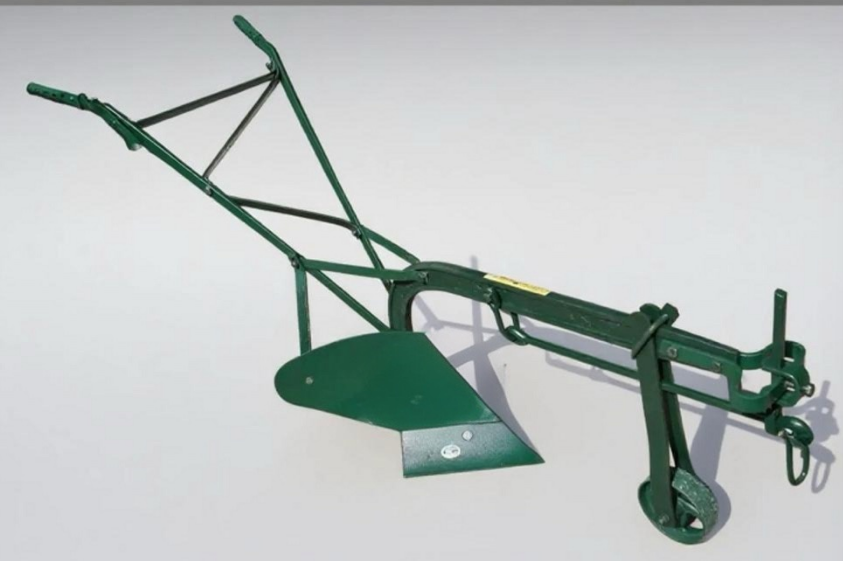 Plough Wheel Cast Iron Material Enhances Load-BearingNov-10-2025Plough Wheel Cast Iron Material Enhances Load-Bearing
Plough Wheel Cast Iron Material Enhances Load-BearingNov-10-2025Plough Wheel Cast Iron Material Enhances Load-Bearing -
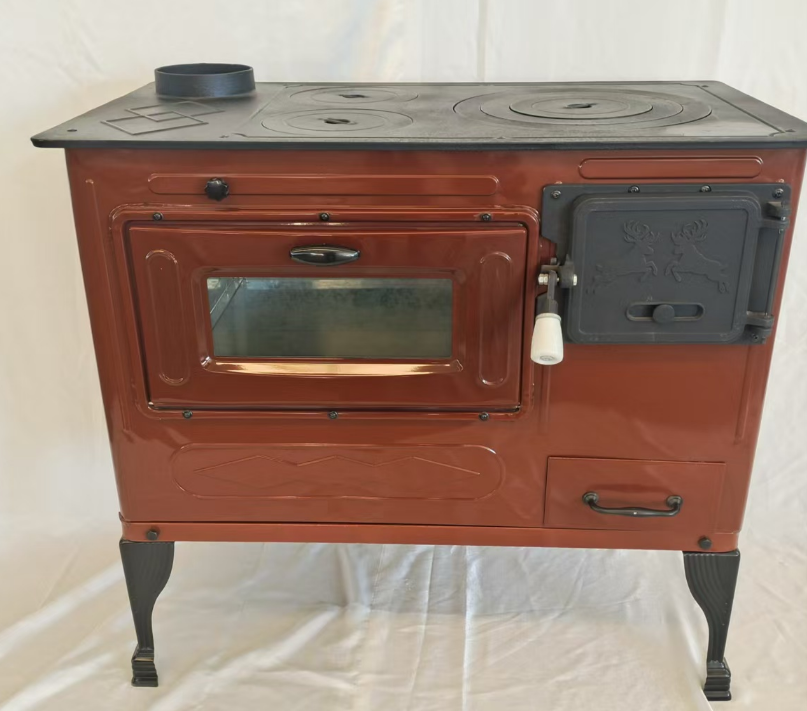 Cast Iron Cooking Stove Heat Retention Ensures Even Food HeatingNov-10-2025Cast Iron Cooking Stove Heat Retention Ensures Even Food Heating
Cast Iron Cooking Stove Heat Retention Ensures Even Food HeatingNov-10-2025Cast Iron Cooking Stove Heat Retention Ensures Even Food Heating -
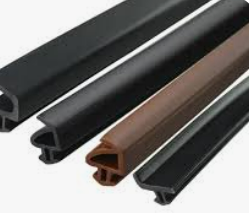 Rubber Strip Shock Absorption Protects Window EdgesNov-10-2025Rubber Strip Shock Absorption Protects Window Edges
Rubber Strip Shock Absorption Protects Window EdgesNov-10-2025Rubber Strip Shock Absorption Protects Window Edges





